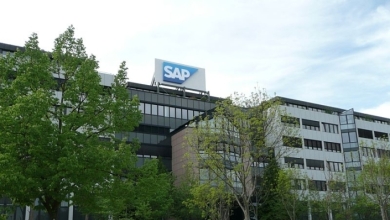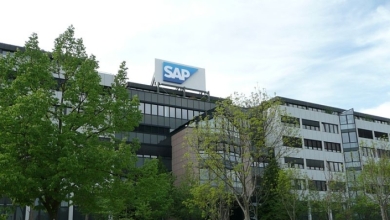
SAP has just launched RISE with SAP (formerly SAP Cloud Nine) and this subscription offering combines Infrastructure as a Service (IaaS) from a chosen hyperscaler, Cloud Managed Services (CMS) from SAP, and Application Managed Services (AMS) from a systems integrator into a single offering and contract.
John Appleby (pictured), CEO at SAP optimisation specialist Avantra looks at the background and the implications for customers and for solution providers.......
In 2013, SAP announced HANA Enterprise Cloud as a solution to the problems deploying HANA. At that time, buying SAP HANA was challenging because it required expensive specialist hardware and installation.
“Moreover, none of the top tier hosting or cloud providers allowed for SAP HANA as an option. I remember meeting with then-CEO Jim Hagemann-Snabe in 2013 and commenting that if he created HANA Enterprise Cloud to galvanize the market to build HANA-based clouds, it would be a pretty smart move.... He smiled,” says John Appleby.
Fast-forwarding to 2020, all the major vendors, including hyperscalers Microsoft, Amazon, and Google, now provide HANA-based solutions via a marketplace. As a result, hyperscalers and other hosting providers provision most new HANA Enterprise Cloud contracts, and SAP is now effectively exiting the Infrastructure as a Service (IaaS) market, he says..
[IT Europa] So where are we now?
Today's problem is a people, process, and technology problem. All things being equal, customers would like to move to S/4HANA, but the number of skilled consultants in the market is low, the process to upgrade to S/4HANA is different for every customer, and there is no software automation stack.
SAP has the additional problem that it has lost control of the customer conversation. Hyperscalers drive the move to the cloud, and systems integrators are driving business process optimization and consulting.
[ITE] Can you outline the components of RISE with SAP?
- Business Process Intelligence. This is the software acquired from Signavio and looks to improve business processes.
- Technical Migration. This is a move to the S/4HANA Cloud including SAP and partner services to remove modification and harmonize the data layer.
- Infrastructure & Operations. SAP claims a 20% reduction in TCO by running RISE with SAP.
So which IaaS vendors will be allowed?
Microsoft and Google are launch partners, with Satya Nadalla speaking from Microsoft about the partnership. It seems likely that other vendors, including hyperscaler AWS but also other private cloud providers will join, says John Appleby. If a customer wants to keep a single contract with a hyperscaler, it can continue to do so, but not via a RISE with SAP Contract. Also, if the customer wants to keep a single contract with a chosen systems integrator, it can continue to do so, but not via RISE with SAP Contract.
So RISE with SAP may be quite advantageous if a customer is looking for a single contract and set of SLAs. The other significant advantage is that SAP is likely willing to roll shelfware into a RISE with SAP contract. In some cases, it may be possible to reduce waste in contracts significantly.
The 22% Enterprise Support maintenance costs could be a burden for other customers, and it may suit them to push Capex into Opex.
[ITE] What are the disadvantages of SAP Rise?
Some large customers prefer to contract all their hosting and services requirements directly to vendors to perform contract consolidations. In some cases, those contracts are 10x the size of the SAP contract, and so customers could be giving away leverage with those vendors by consolidating part of their requirements on SAP paper.
John Appleby: “There is the question of whether vendor lock-in through the full stack is an issue for customers - presently they can move around contracts as they move to different providers. This may be partially mitigated by SAP allowing changes to the underlying vendors.”
Another disadvantage is that it may be very difficult to have a multi-cloud strategy which allows you to optimize costs based on available infrastructure options.
It also seems likely that RISE with SAP will be more expensive than tendering the services separately, because SAP will need to make a margin on services and cloud provided by other vendors. That said, SAP is positioning Rise as a cost reduction play.
[ITE] What is the competition to RISE with SAP?
Almost every systems integrator has a competitive offering to RISE with SAP and most have combined Application and Cloud managed services into one offering and offer this via a hyperscaler. Some have very sophisticated AIOps platforms which automate running SAP.
It seems likely that the Systems Integrator landscape will bifurcate, with some integrators offering competing services and others being RISE with SAP partners. It’s also likely that some of the bigger Systems Integrators will do both, and even compete with themselves, he thinks.
[ITE] How is RISE with SAP Licensed?
SAP tends to keep its licensed models closed for legal reasons, but we can expect a few things.
First, SAP is looking to single-source RISE contracts and pass-through revenue to other vendors to control the customer conversation.
Second, RISE contracts are subscription-based, and SAP is no doubt looking to categorize RISE contracts as Annual Recurring Revenue, which will please investors and analysts.
Lastly, SAP executive Bob Stutz has been talking publicly about consumption-based models, and no doubt customers will look to hold SAP to account on this.
[ITE] Final thoughts?
John Appleby: “It will be interesting to see how RISE with SAP plays out. I find it reminiscent of the HANA Enterprise Cloud launch in 2013, because SAP needs to cause the market to reduce the cost of operating SAP systems and get customers more quickly to SAP S/4HANA.
“For every day that a customer delays moving to S/4HANA, there is a chance that they take a different direction - either different business investments, or worse, moving a component of the SAP Business Suite into a competitor’s cloud. In the grander scheme of things, it seems likely that RISE with SAP will galvanize the market to be more cost-effective and move to SAP S/4HANA. What is less clear to me is how many of SAP’s key customers will want to consolidate all their SAP spend under SAP itself,” he concludes.


